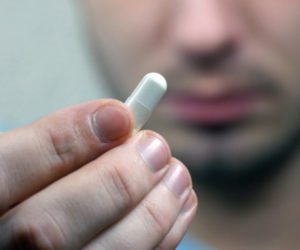Hydrocodone Abuse Signs, Symptoms and Treatment

Spotting Hydrocodone Abuse Signs and Symptoms and Going About Treatment
Hydrocodone is a prescription medication that just happens to be one of the most addictive substance on the market today. Due to its popularity and ease of availability through legally prescribed channels, drug dealers and unlicensed internet sites, hydrocodone abuse is a major threat to the well-being of millions of Americans.
The Drug Enforcement Administration (DEA) has reported that diverted use of hydrocodone exceeds that of than any other illicit or legal drug. In addition, studies show, non-medical use or hydrocodone abuse is linked to a 500% increase in the number of people visiting emergency rooms across the nation. As a result, hydrocodone abuse signs, symptoms and need for treatment to curb hydrocodone addictive patterns of behavior has become quite prevalent.
Hydrocodone Addict Behavior
As an analgesic narcotic with the ability to produce dangerous effects similar to heroin, indications of hydrocodone abuse signs need to be addressed as soon as possible to prevent hydrocodone addict behavior. Prescription medications containing hydrocodone that are mixed with other non-narcotic ingredients also present a high risk for hydrocodone abuse if these products are misused. Drugs that may contain hydrocodone include prescription medications such as:
- Lortab
- Vicodin
- Damason-P
- Azdone
- Alor 5/500
- Panasal 5/500
- Tri-Vent HC
- Histex HC
- Mintex HC
Patients should be aware that although Federal Drug Administration (FDA) regulations have less restrictive distribution and use guidelines for hydrocodone blended products, the risk factors for addiction is not completely eliminated.
The shift from prescribed use of 100% hydrocodone or those mixed with this drug can easily segue into a dependence and unsafe hydrocodone addict behavior. Learning the hydrocodone abuse signs and symptoms can help to address drug use before it leads to addiction.
Hydrocodone Abuse Signs and Symptoms
1. Changes in consumption pattern is a major warning sign for hydrocodone users. This is evidenced when individuals taking Hydrocodone gradually increases the amount of the drug to get the same effects.
2. Dependence is often evidenced by changes in the method of administration. When oral consumption shifts to crushing and snorting, it creates a faster onset of the effects that cause dependence. Snorting hydrocodone rather than ingesting it orally can also result in side effects such as:
- uncontrollable anxiety,
- mood swings,
- chest tightness,
- disorientation or confusion,
- constipation,
- problems passing urine
- itchiness and rashes,
- pulmonary discomfort
3. When drug use has escalated to the point that it is necessary to seek alternate sources other than legitimate avenues for drug supply.
4. Continued use of hydrocodone after the medical need has been resolved or the doctor no longer deems it necessary to prescribe this drug.
5. If efforts to stop using hydrocodone triggers uncomfortable symptoms such as abdominal cramping, tremors, diarrhea, flu like symptoms or nausea and vomiting that disappear if the drug is taken.
Like any other addiction, recovery from hydrocodone dependence can be managed effectively. However, due to high tolerance levels, patients may need specialized care to withdraw from habituated use of this drug. The right treatment will enable a person to safely complete a hydrocodone detox and complete the ensuing recovery program that achieves freedom from dependence on this drug.
Hydrocodone detox and Treatment
Hydrocodone withdrawal symptoms typically occur when an individual has developed a chronic need for this drug through regular or long term use. When efforts to stop using hydrocodone due to unpleasant or worrisome symptoms occur, it may be time to seek professional help. Some of the symptoms described by the Mayo Clinic as related to hydrocodone withdrawals include excessive sweating, rapid breathing, spikes in blood pressure, anxiety, depression abdominal cramps, severe nausea and vomiting, fever, muscle aches and pains. One or more of these symptoms can begin to manifest after missing just one dose of regularly consumed hydrocodone.
Treatment for addiction to hydrocodone should be sought early to avoid escalation into a medical crisis situation that can occur for some individuals with other health conditions. The hydrocodone treatment process involves but is not limited to:
- Hydrocodone detoxification. This treatment module typically occurs with around-the-clock medical oversight that ensures the mental and physical stability of the individual throughout the process. The length and treatment protocols applied are based on the duration and severity of the addiction to hydrocodone.
- A hydrocodone detox is followed by a program of rehabilitation designed to achieve long term sobriety. This comprehensive continuum of care usually integrates pharmacological and therapeutic remedies as well as some level of aftercare.
Studies show the most effective Addiction treatment for Hydrocodone is one that is customized to the variable needs of each patient. Customization is centered around a unique set of circumstances such as the patient’s medical condition, frequency of interaction with the drug, genetics and environmental factors. It may also involve psychological and medical issues that may require continued use of an alternative treatment for painful chronic conditions.
If you or a loved one needs help with abuse and/or treatment, please call the WhiteSands Treatment at (877) 855-3470. Our addiction specialists can assess your recovery needs and help you get the addiction treatment that provides the best chance for your long-term recovery.
